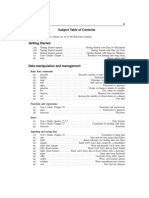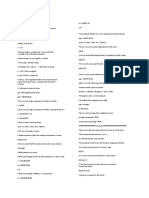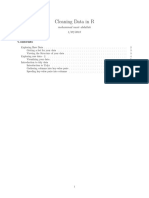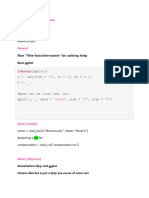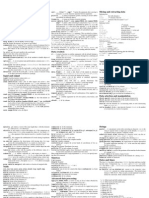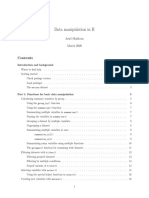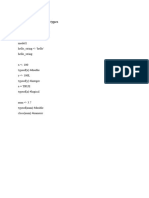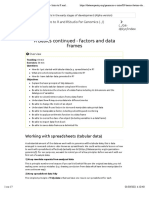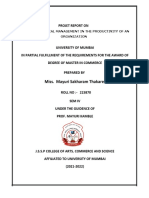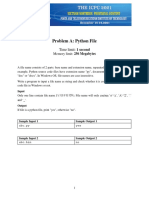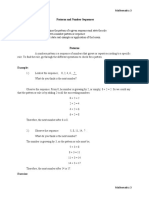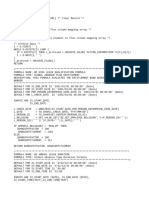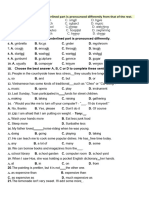0% found this document useful (0 votes)
15 views6 pagesDetailed Explanations For Programming in R. Wrangling Data
The document provides detailed instructions for processing data in R, including setting file paths, reading datasets, adding and merging columns, and handling missing data. It covers various data manipulation techniques such as filtering, sorting, and summarizing data, as well as saving processed data to files. Additionally, it suggests using tools like ChatGPT for troubleshooting and clarifying concepts.
Uploaded by
soloviovaladaCopyright
© © All Rights Reserved
We take content rights seriously. If you suspect this is your content, claim it here.
Available Formats
Download as PDF, TXT or read online on Scribd
0% found this document useful (0 votes)
15 views6 pagesDetailed Explanations For Programming in R. Wrangling Data
The document provides detailed instructions for processing data in R, including setting file paths, reading datasets, adding and merging columns, and handling missing data. It covers various data manipulation techniques such as filtering, sorting, and summarizing data, as well as saving processed data to files. Additionally, it suggests using tools like ChatGPT for troubleshooting and clarifying concepts.
Uploaded by
soloviovaladaCopyright
© © All Rights Reserved
We take content rights seriously. If you suspect this is your content, claim it here.
Available Formats
Download as PDF, TXT or read online on Scribd
/ 6







